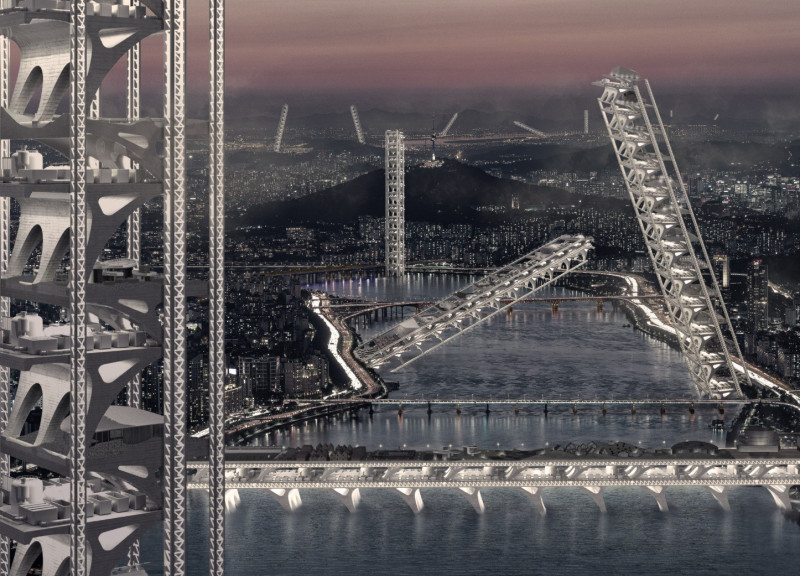5 key facts about this project
The design revolves around enhancing urban connectivity and integrating ecological resources around the Han River. This concept reimagines the urban landscape to emphasize public access and sustainability. A high-rise structure acts as a bridge linking the districts of Gangnam and Gangbuk, tackling issues related to space separation and inequality. By prioritizing public areas over private developments, the design responds to modern urban needs.
High-Rise Integration
The vertical layout includes various urban functions, such as an ecological market, dining options, a museum, and educational centers. These facilities are positioned effectively to encourage people to interact with the riverfront. This arrangement creates a lively public space, inviting community engagement while improving pedestrian routes. Each area is intended to contribute meaningfully to a cohesive urban environment.
Ecological Focus
The Han River is viewed as an important ecological asset rather than just a physical barrier. The design integrates systems for water purification and treatment, enhancing the river’s role in community life. By utilizing ozone for purification, the approach showcases commitment to sustainability. This ensures that water remains a safe and accessible resource for both residents and the environment.
Self-Sufficient Systems
The project incorporates systems that are self-sufficient for water treatment and energy production. This emphasis on sustainability helps to lessen dependence on outside resources, promoting a more circular economy. The introduction of natural topographies and scenic features along the river also improves the ecological landscape and separates it from busy urban life.
The overall design develops a public space that blends urban activity with environmental considerations. It makes the Han River an important focal point for community involvement and ecological care. People can experience the sound of flowing water, glimpse green spaces, and foster connections with nature within the heart of the city.



















































